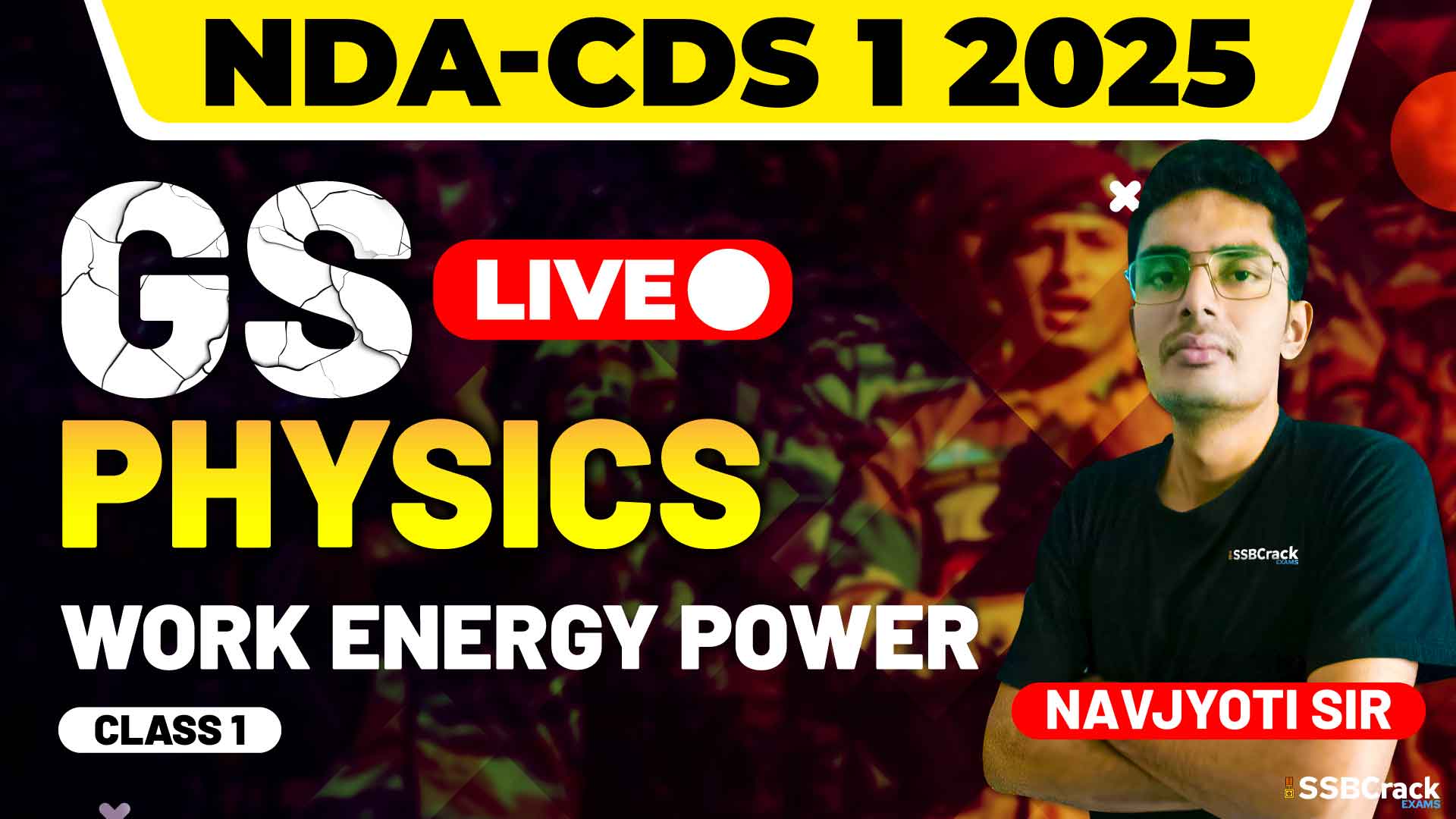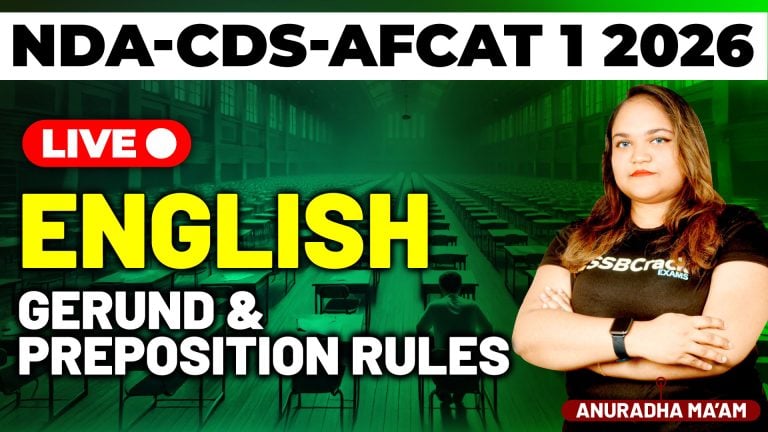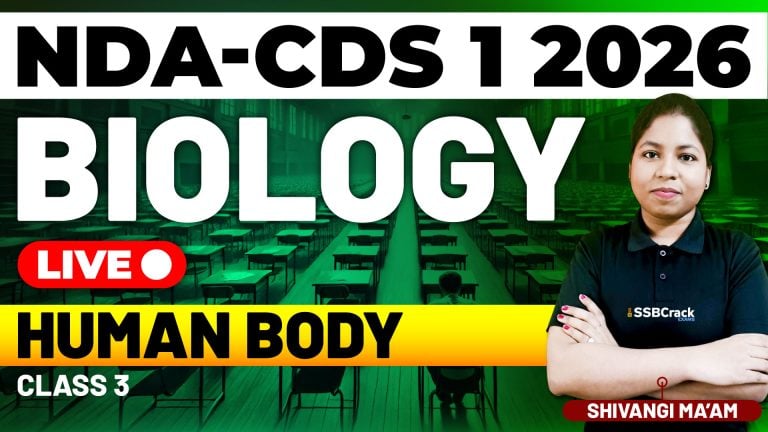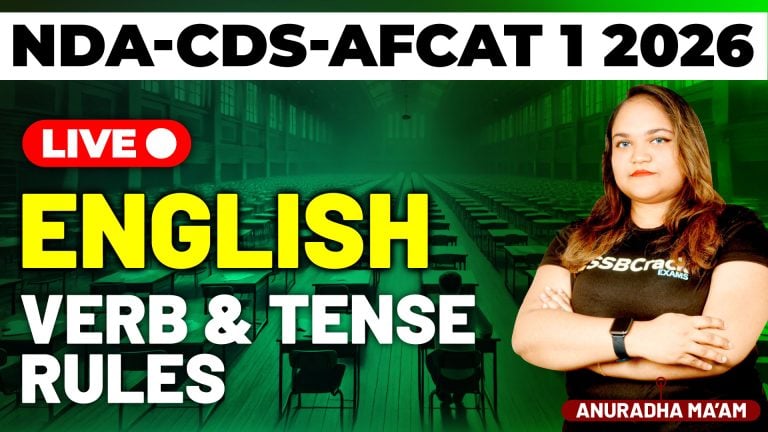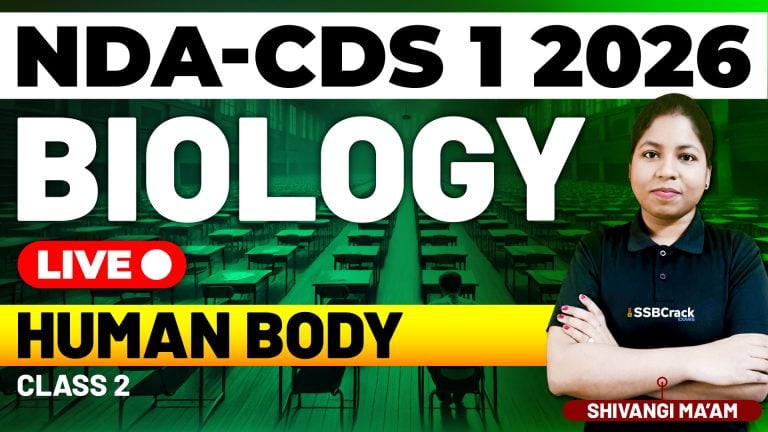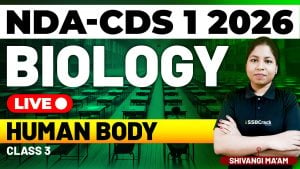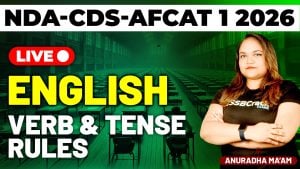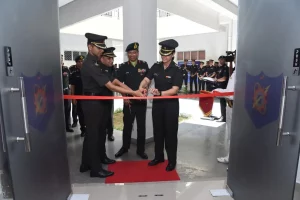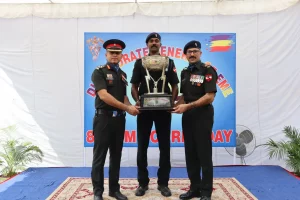The topic Work, Energy, and Power is a critical part of the Physics section for competitive exams like the National Defence Academy and Naval Academy (NDA-NA) Exam – Paper II (GAT) and the General Knowledge (GK) Paper of the Combined Defence Services (CDS) Exam. To help aspirants gain a strong grasp of the concepts and score better, a recent class was conducted focusing on the subtopics: the concept of work, types of energy (kinetic and potential), conservation of energy, power, collisions (elastic and inelastic), and types of levers with their classifications.
The session emphasized conceptual understanding and strategic preparation of the topics to meet exam demands effectively. The approach included interactive discussions, real-life examples, and problem-solving strategies to equip students with clarity and confidence.
Details of the Class
The class was structured to address all major aspects of the topic, ensuring that students understood the theoretical concepts as well as their applications. A clear focus was placed on the subtopics, which are often tested in exams like NDA-NA and CDS. Here’s an overview of what was discussed:
1. Concept of Work
The session began with a detailed discussion on the concept of work. Students learned how work is defined and understood in physics, emphasizing the role of force and displacement. Real-life examples, such as lifting objects or pushing a trolley, were used to illustrate the idea of work.
2. Types of Energy
The class explored the two main types of energy:
- Kinetic Energy: The energy possessed by a body due to its motion. Examples like a moving vehicle, a flowing river, or a running athlete were discussed.
- Potential Energy: The energy stored in a body due to its position or configuration. Scenarios like a stretched bow, water stored in a dam, or a stone held at a height were highlighted.
3. Conservation of Energy
One of the most important concepts in physics, the conservation of energy, was thoroughly explained. The class discussed how energy can neither be created nor destroyed but only transformed from one form to another. Practical examples like a pendulum’s motion and hydroelectric power generation were used to simplify the concept.
4. Power
The class then moved on to the concept of power, which is the rate of doing work. Students were introduced to examples such as comparing the performance of machines or athletes to explain the practical importance of power in real-world applications.
5. Collisions
The session covered the two types of collisions:
- Elastic Collisions: Where both momentum and energy are conserved (e.g., billiard balls).
- Inelastic Collisions: Where momentum is conserved, but some energy is lost (e.g., clay sticking to a wall).
Students were encouraged to analyze these types of problems logically, understanding the key differences and outcomes of each type of collision.
6. Levers and Their Classes
The class concluded with a discussion on levers and their classifications. Students were taught about the three classes of levers:
- First-Class Lever: Fulcrum in the center (e.g., seesaw, crowbar).
- Second-Class Lever: Load in the center (e.g., wheelbarrow, nutcracker).
- Third-Class Lever: Effort in the center (e.g., human arm, tweezers).
Every concept was backed by relevant examples to ensure clarity.
Strategies to Prepare Work, Energy, and Power for NDA-NA and CDS Exams
To master this topic and maximize your score, it is essential to follow a focused and disciplined strategy. Here are some preparation tips that were discussed during the session:
1. Understand the Concepts Thoroughly
- Start with building a strong foundation in basic definitions like work, energy, and power.
- Focus on understanding the difference between kinetic and potential energy. Relate these concepts to real-life situations for better retention.
- Pay special attention to the law of conservation of energy, as questions based on transformations of energy are commonly asked in exams.
2. Make Clear Notes
- Write down concise notes for each subtopic. Include definitions, classifications, and key points for quick revision.
- Draw simple diagrams for concepts like levers, collisions, and energy transformations to aid visual learning.
3. Focus on Real-Life Applications
Relating physics concepts to practical examples will make it easier to grasp and retain information. For example:
- Work: Pushing a shopping cart or climbing stairs.
- Energy: Water stored in dams (potential energy) turning turbines (kinetic energy).
- Power: Comparing machines or light bulbs in terms of efficiency.
- Levers: Using tools like scissors (first-class lever) or a nutcracker (second-class lever).
Understanding these applications will help you solve theoretical and conceptual questions effectively.
4. Practice Previous Years’ Questions
- Solve previous years’ MCQs on this topic to understand the exam pattern and question types.
- Analyze frequently asked questions to identify key subtopics such as energy transformations, types of levers, and conservation of energy.
5. Break Down the Problem
For scenario-based questions:
- Identify what is being asked (work, power, energy, or collisions).
- Break the question into smaller parts to solve logically.
- Draw diagrams if necessary to visualize the situation, especially for levers and collisions.
6. Attempt Mock Tests
- Regularly attempt full-length mock tests and topic-wise practice sets.
- Time yourself while solving questions to build speed and accuracy.
- Review your performance and focus on correcting mistakes.
7. Clear Doubts Immediately
Do not hesitate to clarify doubts as soon as they arise. Discuss with mentors, peers, or refer to trusted study materials to ensure conceptual clarity.
8. Revise Regularly
Regular revision is key to retaining concepts like conservation of energy, types of collisions, and the classes of levers. Go through your notes frequently, especially in the final days leading up to the exam.
Why Focus on Work, Energy, and Power?
- Scoring Topic: Questions from this topic are often direct and concept-based, making it a scoring area in competitive exams.
- Foundation for Other Topics: Understanding work, energy, and power lays a strong foundation for advanced topics like mechanics, rotational motion, and thermodynamics.
Conclusion
The recent class on Work, Energy, and Power provided aspirants with an opportunity to build a solid understanding of the topic while practicing relevant MCQs. By covering essential subtopics such as work, energy, power, collisions, and levers, the session aimed to equip students with the skills required to tackle this topic confidently in the NDA-NA and CDS exams.
To excel in this topic, aspirants must focus on conceptual understanding, consistent practice, and time management. Solving previous years’ questions, understanding real-life applications, and revising regularly will ensure success.
With a focused and strategic approach, mastering Work, Energy, and Power becomes a straightforward and rewarding effort. Stay determined, practice diligently, and you will certainly achieve your goal. Best of luck!
